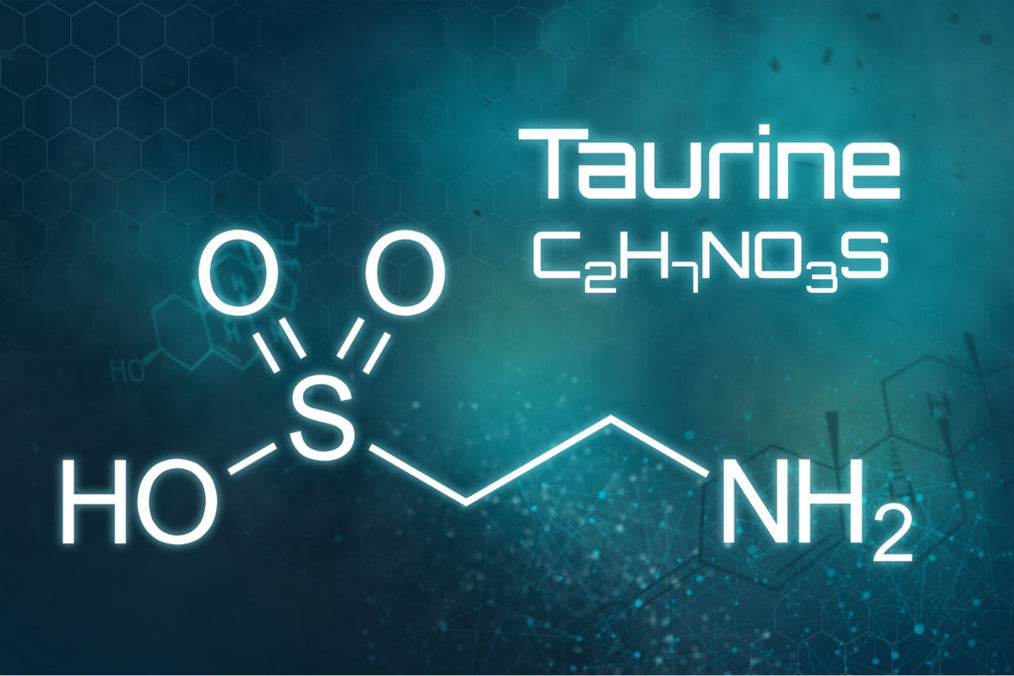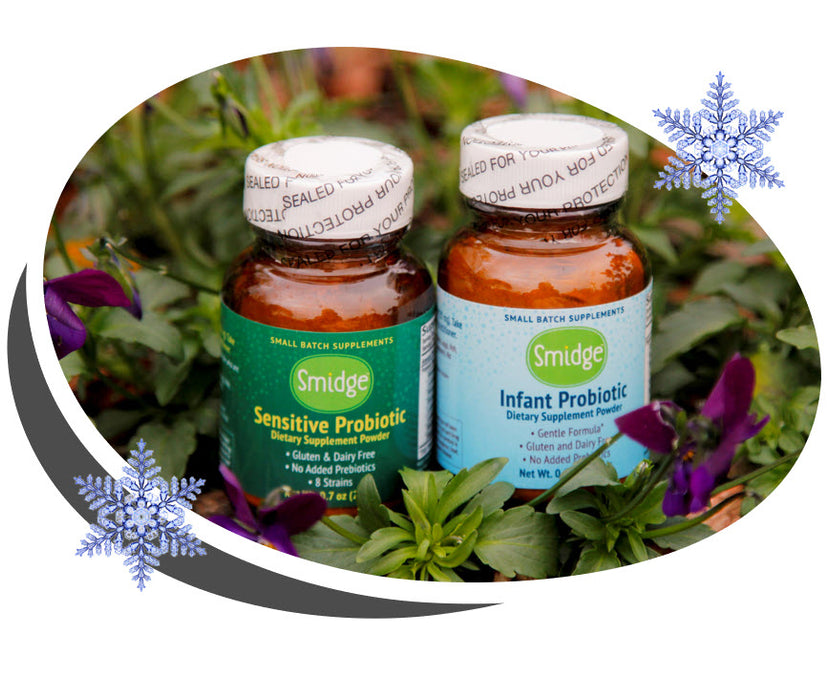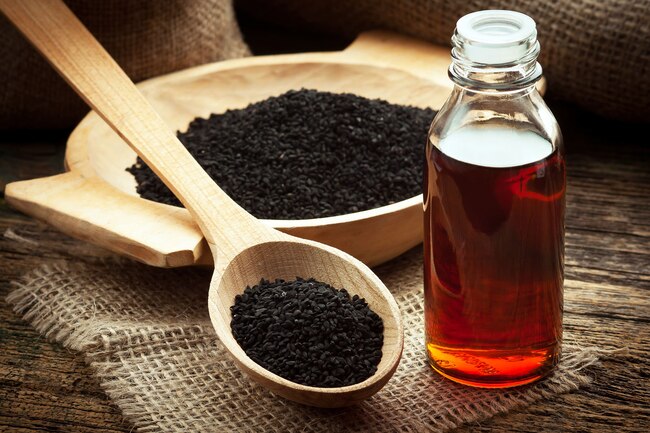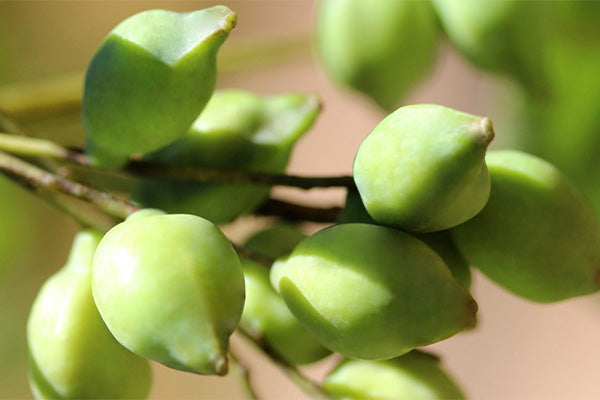How to Prevent Muscle Cramps

Top Tips for Relief & Prevention
If you've ever been stopped in your tracks by a sudden, vice-like muscle cramp, you know how debilitating it can be. To figure out how to prevent muscle cramps for good, we need to dig deeper than just stretching it out. It's about listening to what your body is telling you through that pain.
Most of the time, cramps are a symptom of something else going on under the surface—think mineral imbalances, dehydration, or even just pushing your body a bit too hard. Let's get to the bottom of it so you can build a strategy that actually works.
Decoding the Real Causes of Muscle Cramps
That shocking "charley horse" that jolts you awake at night, or the calf muscle that seizes up mid-run—it’s an awful feeling. But these painful contractions aren’t just random acts of cruelty from your body; they're signals.
It's tempting to blame a single cause, but cramps are usually the result of a perfect storm of factors. Think of it less as one isolated problem and more as a system-wide imbalance that needs a bit of a reset.
The Key Triggers Behind the Pain
The usual suspects behind muscle cramps often work together. Getting to know them is the first real step towards finding relief.
- Dehydration and Mineral Imbalance: This is the big one. When you sweat, you don't just lose water. You're also losing critical electrolytes like sodium, potassium, and magnesium, which are the very things that help your nerves and muscles communicate properly.
- Muscle Fatigue and Overexertion: Ever push yourself a little too hard during a workout? Pushing your muscles past their usual limits without proper conditioning is a classic recipe for cramps. All that strain can disrupt normal muscle function.
- Poor Circulation: If blood isn't flowing freely, your muscles aren't getting the oxygen and nutrients they need. This makes them much more prone to cramping up, especially when you're inactive for a while, like during sleep.
For anyone leading an active life in Australia, these factors are especially important. Exercise-associated muscle cramps (EAMC) are a massive issue in endurance sports. We see it all the time—triathletes in Australia can experience them at a rate of around 67%, while for marathon runners, it's somewhere between 30% and 50%. This shows just how vital it is to get your prevention strategy sorted. If you want to dive deeper, you can read more about EAMC management strategies.
A muscle cramp is often a sign that your body is out of balance. It's your body’s way of signalling that it needs more of something—be it fluids, key minerals, or simply rest and recovery.
By figuring out your personal triggers, you can start building a plan that tackles the root cause. The next few sections will walk you through exactly how to do that, step by step.
Mastering Hydration and Key Electrolytes
When it comes to muscle cramps, just chugging more water often isn't the magic bullet we hope for. The real secret lies in smart hydration—making sure your muscles get the right balance of fluids and the essential minerals they need to work properly. This is where electrolytes come into play.
Electrolytes are basically minerals that carry an electric charge. They're absolutely crucial for countless functions in your body, especially nerve signals and muscle contractions. When you sweat, you don't just lose water; you lose these critical minerals too, which is a classic trigger for that sudden, painful muscle seizure.
Why Electrolytes Are Non-Negotiable
I like to think of electrolytes as the spark plugs for your muscles. When we're talking about muscle health, the big three are sodium, potassium, and magnesium. Without enough of them, the communication lines between your nerves and muscle fibres start to break down, leading to those involuntary contractions we know as cramps.
This balance is particularly important for us here in Australia. The heat and humidity can ramp up how much you sweat, even during fairly moderate activity. A weekend hike or a day out in the garden can drain your mineral stores much faster than you might think.
Maintaining and replenishing your electrolyte levels—specifically potassium, sodium, and magnesium—is essential for keeping muscle cramps at bay. Sometimes just drinking water isn't enough.
A great starting point is to focus on mineral-rich water and whole foods. But if you're gearing up for intense exercise, spending a long day in the sun, or already dealing with cramps, a targeted electrolyte drink can be a real game-changer. For a curated selection, you can explore high-quality hydration and electrolyte options that are designed to restore that mineral balance efficiently. Using a quality electrolyte mix helps your body absorb fluids faster than water alone and directly replenishes the minerals lost through sweat, allowing your muscles to function correctly and recover more quickly.
Hitting Your Daily Mineral Targets
Knowing how much of each key mineral you need is the first step towards building a truly effective anti-cramp diet. This chart breaks down the recommended daily intake for sodium, potassium, and magnesium—the minerals that are absolutely vital for proper muscle function.
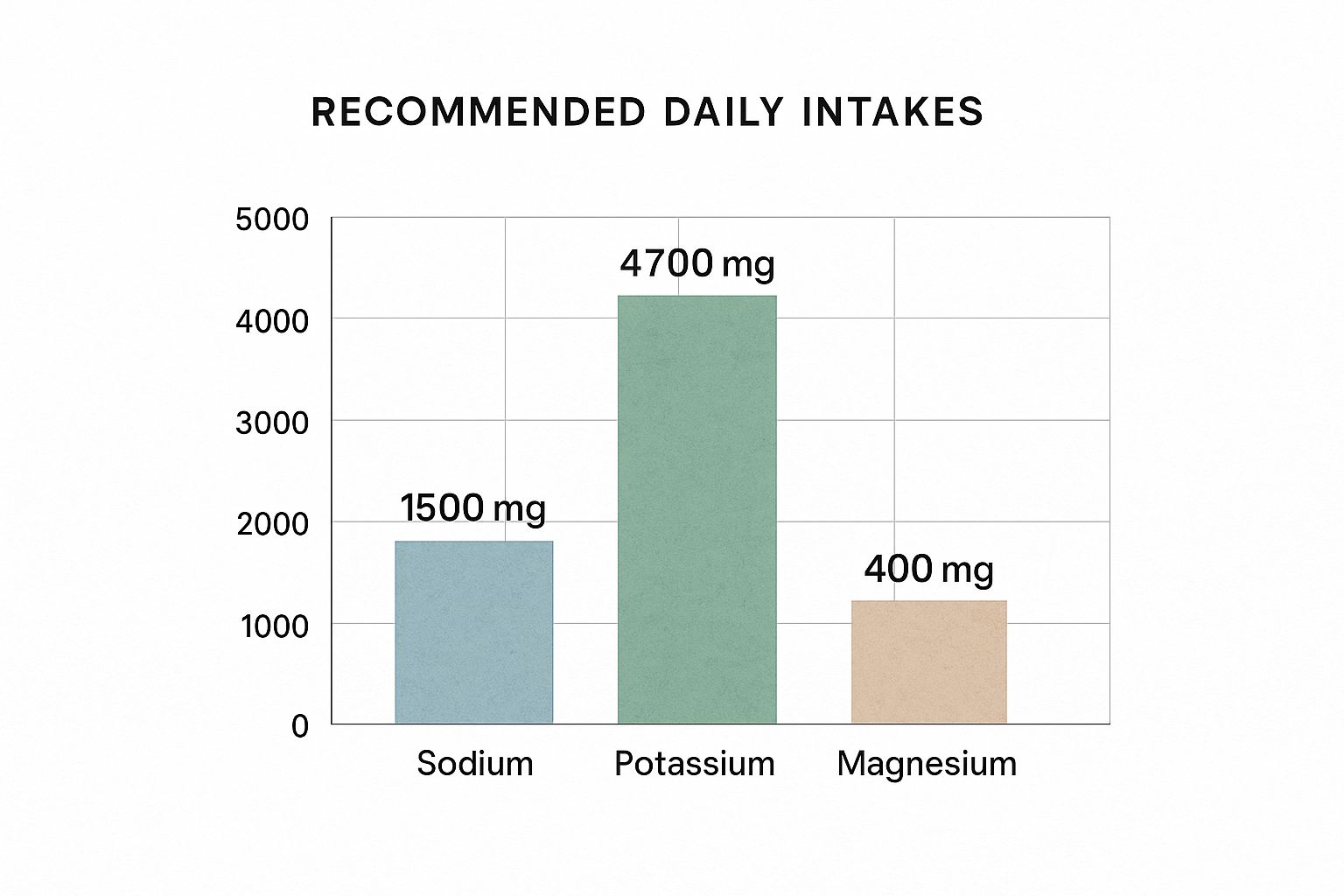
What really stands out here is how much potassium our bodies need each day compared to the other two. It really highlights why getting enough potassium-rich foods in your diet is so important for keeping your muscles happy.
So, how do you turn these numbers into everyday action? It all comes down to making small, conscious choices throughout your day.
- Sodium: A pinch of good-quality sea salt in your water is a fantastic trick, especially after a workout, as it helps with absorption and replenishment.
- Potassium: Everyone thinks of bananas, and they're great, but don't forget about avocados, sweet potatoes, and spinach. These are absolute potassium powerhouses.
- Magnesium: To boost your magnesium levels naturally, try to weave dark leafy greens, nuts, seeds, and even a bit of dark chocolate into your meals.
By focusing on this mineral trio, you're doing more than just hydrating. You’re giving your muscles the precise fuel they need to contract and relax smoothly, helping to keep those painful cramps from ever stopping you in your tracks.
Fuelling Your Muscles With an Anti-Cramp Diet
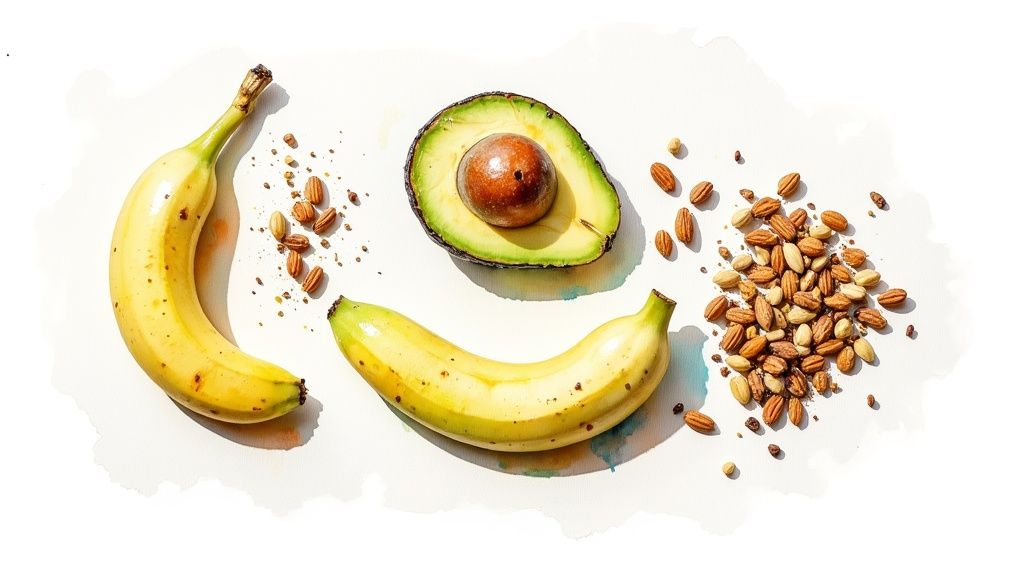
While smart hydration definitely sets the stage for happy muscles, what you eat every day provides the real building blocks for long-term resilience. Think of your food choices as your strongest line of defence against cramps.
Building an anti-cramp diet isn’t about restriction. It's about consistently bringing in powerhouse foods rich in the specific minerals your muscles are crying out for. This way, you fortify your body from the inside out and create a nutritional buffer that stops cramps before they even think about starting.
The Mineral Trio Your Muscles Can't Live Without
For your muscles to contract and relax smoothly, you need to be mindful of three crucial minerals: magnesium, potassium, and calcium. When any of these are out of whack, the delicate communication between your nerves and muscle fibres gets disrupted, often ending in a painful spasm.
- Magnesium: I like to call this the great muscle relaxant. It’s involved in over 300 different processes in the body, but its role in calming nerves and relaxing muscle fibres is what makes it a hero for cramp prevention.
- Potassium: Working hand-in-hand with sodium, potassium is essential for managing your body's fluid balance. It’s also critical for sending the nerve signals that tell your muscles when to contract in the first place.
- Calcium: We all know calcium is great for our bones, but it's also the spark that initiates a muscle contraction. The catch? It needs enough magnesium to tell the muscle to relax again afterwards. It's all about balance.
Of course, getting these minerals from whole foods is always the best bet. They come naturally packaged with other vitamins, fibres, and co-factors that help your body absorb and use them properly.
Building Your Anti-Cramp Plate
It’s one thing to know what to eat, but the real secret is figuring out how to easily weave these foods into your daily life. A proactive diet is hands-down the most reliable way to figure out how to prevent muscle cramps for good.
It doesn't have to be complicated. You could start your day with a smoothie blended with spinach (magnesium), a banana (potassium), and a spoonful of Greek yoghurt (calcium). For lunch, how about a big salad topped with avocado, pumpkin seeds, and some grilled salmon? That’s a fantastic hit of all three minerals plus those brilliant healthy fats.
Consistently eating a variety of mineral-rich whole foods does so much more than just prevent cramps. It boosts your energy, supports your nervous system, and builds overall health and resilience.
Smart snacking is another game-changer. Instead of grabbing something processed when you feel a dip, a handful of almonds or some delicious organic Medjool dates can make all the difference. Dates are a brilliant source of natural sugars for a quick energy lift and are packed with potassium, making them an ideal pre-workout snack to keep cramps away. If you're looking for a quality option, you can find some premium organic Medjool dates to stock up your pantry. By choosing organic, you ensure you're getting pure, nutrient-dense fuel without unwanted pesticides, helping your muscles perform at their best.
To make it even easier, I've put together a quick guide to some of the best cramp-fighting foods you can find locally.
Top Anti-Cramp Foods and Their Key Nutrients
This table is a simple reference to help you build your shopping list and start fuelling your muscles effectively.
| Nutrient | Role in Muscle Function | Excellent Food Sources (AU) |
|---|---|---|
| Magnesium | Acts as a natural muscle relaxant, balancing calcium's contractile action. | Dark leafy greens (spinach, kale), nuts (almonds, cashews), seeds (pumpkin, chia), avocado, dark chocolate. |
| Potassium | Regulates nerve signals and muscle contractions, and maintains fluid balance. | Bananas, sweet potatoes, avocados, coconut water, white beans, salmon. |
| Calcium | Essential for initiating muscle contractions. | Dairy products (yoghurt, cheese), sardines, fortified plant milks, leafy greens (kale, bok choy). |
By making a conscious effort to include these nutrient-dense options on your plate, you’ll be creating a sustainable eating plan that truly nourishes your muscles. It's the best way to protect yourself against those painful interruptions, helping you stay active and feel fantastic.
Smart Stretching and Simple Lifestyle Habits

Beyond what you eat and drink, the way you move—and how you get your body ready for that movement—plays a huge role in preventing cramps. It’s a massive piece of the puzzle. Your daily habits, from the shoes on your feet to your warm-up routine, can either build resilience or leave you wide open to those sudden, excruciating muscle seizures.
Focusing on smart, consistent physical routines can make all the difference. This isn't about frantically stretching after a cramp has already taken hold. It’s about creating a daily practice that keeps your muscles long, flexible, and prepared for whatever you throw at them. This proactive mindset is the real secret when you're trying to figure out how to prevent muscle cramps for good.
Targeted Stretches for Cramp-Prone Muscles
Randomly pulling on a muscle here and there won't cut it. A targeted routine is far more effective. You want to focus on the areas that give you the most grief, which for most people are the calves, hamstrings, and even the arches of the feet.
A classic for a reason is the standing calf stretch. It’s simple and incredibly powerful. Just face a wall, place your hands on it for a bit of support, and step one foot back, making sure you keep your heel pressed firmly to the floor. Hold that for 20-30 seconds on each side. You should feel a gentle pull, never a sharp pain. I find this is perfect after a walk or just before hopping into bed to fend off those dreaded night-time cramps.
For tight hamstrings, sitting on the floor is your best bet. Keep one leg out straight and bend the other. Now, gently lean forward over that straight leg until you feel the stretch. Hold it there and breathe deeply into it. These simple movements help lengthen muscle fibres that get notoriously short and tight from sitting all day.
Proactive stretching does more than just relieve tension. It improves circulation, delivering vital oxygen and nutrients to your muscles, which is one of your best defences against cramping.
Here in Australia, we often combine prevention with treatment when it comes to muscle cramps. Research suggests that daily calf and hamstring stretching can help reduce the severity of night-time cramps, especially in people over 55. While more high-quality studies are always welcome, this approach is a cornerstone of cramp management. You can learn more about Australian health guidelines for cramp relief to get the full picture from a clinical perspective.
Simple Lifestyle Tweaks for Big Results
You'd be surprised how much the little changes to your daily routine can impact your muscle health. These small habits really add up, creating an environment where cramps just don't get a chance to happen.
- Warm-Up Properly: Never, ever jump into strenuous activity with cold muscles. A brisk 5-10 minute walk or a light jog is all it takes to get blood flowing, warming up your muscle tissues and making them far less likely to strain or cramp.
- Choose Supportive Footwear: Think of your feet as your body's foundation. Shoes that lack proper support can subtly alter the way you walk, putting a ton of extra strain on the muscles in your calves and legs. This is particularly important if you spend all day on your feet.
- Stay Active Throughout the Day: If you're stuck at a desk, that prolonged sitting is a circulation killer. Make it a non-negotiable to get up, walk around, and do a few gentle stretches every hour. It keeps your blood moving and your muscles happy.
By weaving these smart stretches and simple lifestyle adjustments into your day, you build a powerful physical defence against cramps that works hand-in-hand with the nutritional strategies we've covered.
Using Supplements for Targeted Support
While a wholefood-focused diet is always the best foundation, sometimes your body just needs a bit of extra help. High-intensity training, periods of serious stress, or simply not getting enough minerals from modern food sources can create a real shortfall. This is where high-quality supplements can be a game-changer in your fight against muscle cramps.
Think of supplements not as a substitute for good nutrition, but as a strategic tool to fill in very specific gaps. When your muscles are consistently tight or cramping up, it's often a loud and clear signal that your body’s mineral stores are running low, especially when it comes to magnesium.
Choosing the Right Magnesium for Muscle Relief
Walking down the supplement aisle can feel overwhelming, and with magnesium, it's easy to get confused. Not all forms are created equal, and the type you choose directly impacts how well your body can actually absorb and use it for muscle relaxation.
- Magnesium Glycinate: This is my go-to recommendation for muscle issues. It's bound to the amino acid glycine, which has its own calming properties. This form is incredibly gentle on the stomach and highly bioavailable, making it a fantastic choice for easing muscle tension and improving sleep without causing digestive drama.
- Magnesium Citrate: This form is also well-absorbed, but it's known for having a natural laxative effect. While it works for muscle function, it might be better suited for someone who also needs a bit of digestive support.
For pure muscle relaxation and cramp prevention, magnesium glycinate is almost always the superior choice because of its targeted action and how well most people tolerate it. To get a better handle on all its advantages, you can learn more about the health benefits of magnesium in our detailed guide. Using a highly absorbable form like glycinate ensures your muscles get the maximum benefit from each dose, directly helping to calm nerve signals and reduce the frequency and intensity of cramps.
A quick but important note: Before you start any new supplement, it's non-negotiable to chat with a healthcare professional. They can help you figure out the right form and dosage for your unique needs, making sure it’s both safe and effective for you.
Finding Your Ideal Dosage and What to Expect
There’s no magic number when it comes to magnesium dosage. It really depends on your diet, how active you are, and your individual biochemistry. A good starting point for most people is around 200-400 mg per day. I often suggest taking it in the evening, as it can promote muscle relaxation and pave the way for a more restful sleep.
The best approach is to start low and go slow. Begin with a smaller dose and gradually increase it, paying close attention to how your body feels. The main side effect to watch for, particularly with forms like citrate, is loose stools. If that happens, it’s simply a sign to dial back the dose a bit.
By using supplements thoughtfully, you give your body the targeted reinforcement it needs to keep your muscles functioning smoothly and, most importantly, pain-free.
Your Questions About Muscle Cramps Answered
Even with a solid plan, it's natural for questions to pop up along the way. Let's tackle some of the most common queries I hear about muscle cramps with straightforward, practical answers to help you fine-tune your strategy for lasting relief.
Why Do I Get Cramps More Often at Night?
Ah, the dreaded "charley horse" that jolts you awake. It’s an incredibly common and painful experience. Night-time cramps are a real issue for many Aussies; in fact, some research suggests that about one-third of adults go through them.
So, what’s going on? As we sleep, our circulation naturally slows down. We also tend to lie in positions that can keep our muscles, especially in the calves, shortened for hours on end. Now, add any existing dehydration or mineral imbalances from your day into that mix, and you've got the perfect recipe for a sudden, painful spasm.
I Stretched and Hydrated, So Why Am I Still Cramping?
This is a classic, and I understand how frustrating it can be. When you’ve covered the basics like stretching and drinking water but are still getting cramps, it usually points to a deeper mineral issue. Think of persistent cramping as a loud signal from your body that it’s running low on key electrolytes like magnesium, potassium, or sodium.
And remember, just chugging plain water isn't always the answer, particularly after a big sweat session. Without enough sodium, your body can't actually hold onto the water you're drinking. This is where a balanced, mineral-rich diet—and perhaps some targeted supplementation—can truly change the game.
When basic prevention methods fall short, it’s almost always a sign to investigate your mineral intake more closely. Cramps are often your body's way of telling you it needs more specific nutrients to function properly.
Do I Need to See a Doctor About My Cramps?
For most of us, the odd muscle cramp is just a nuisance that can be managed with the lifestyle tweaks we’ve talked about. That said, there are definitely times when getting a professional opinion is a smart move.
Consider booking an appointment with your doctor if your cramps are:
- Extremely severe or frequent: Happening multiple times a week and really disrupting your daily life or sleep.
- Not responding to self-care: You’ve genuinely tried everything—hydration, diet changes, stretching—and nothing is making a dent.
- Paired with other symptoms: Look out for things like muscle weakness, swelling, or numbness in the area that's cramping.
Sometimes, persistent cramps can be linked to an underlying medical condition or even be a side effect of medication. A healthcare professional can help you rule out anything serious and create a treatment plan that’s right for your specific situation.
At KimiKim Organics, we believe that nourishing your body with the right minerals is the foundation of long-term health and resilience. Explore our curated selection of high-quality supplements and real-food staples to build your ultimate anti-cramp strategy.




